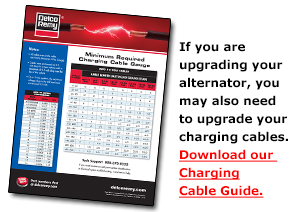 Oftentimes, school buses are outfitted with air conditioning units, wheelchair lifts and many other accessories after they are sold to the school district. Eventually, these buses start experiencing battery issues because the originally installed alternator doesn’t provide enough output to handle the new electrical demands. If the alternator is not upgraded, this will result in constant discharging of the batteries, premature alternator failure, and starting issues due to low voltage.
Oftentimes, school buses are outfitted with air conditioning units, wheelchair lifts and many other accessories after they are sold to the school district. Eventually, these buses start experiencing battery issues because the originally installed alternator doesn’t provide enough output to handle the new electrical demands. If the alternator is not upgraded, this will result in constant discharging of the batteries, premature alternator failure, and starting issues due to low voltage.
Is Your Alternator Sufficient?
Measuring the current draw for the bus is the best way to ensure the alternator has sufficient output for all of the vehicle’s electrical demands. This will help you determine if you have the correct alternator for your application.
-
Fully charge the batteries before beginning. Partially charged batteries will result in inaccurate readings.
-
Attach a clamp-on ammeter around negative battery cables.
-
Turn on all accessories, including the heater, defroster blower fan, lights, wipers, radio, video monitor system, stop flashers and warning lights.
-
Take and record a reading.
-
Record the amperage draw of the special needs lift if the bus has one. While the lift is going up, take a reading and record it. Keep in mind the amperage draw may vary depending on the type of lift being used and its age.
-
Record a reading with engine on, high RPM and accessories off.
-
Calculate the recommended alternator amperage rating by adding all the readings together and then multiplying that total by 1.2. As a rule of thumb, the total vehicle amperage demands should be 20 to 30 percent under your alternator’s rated output.

